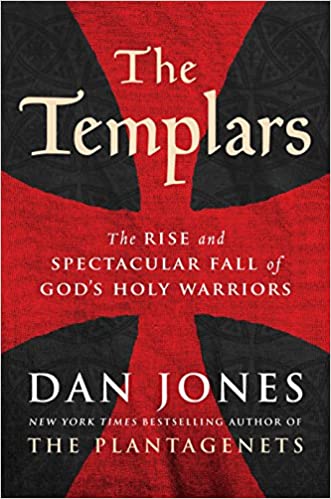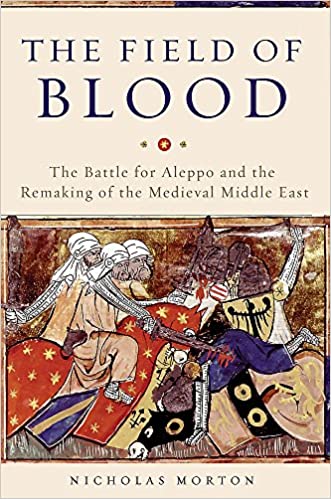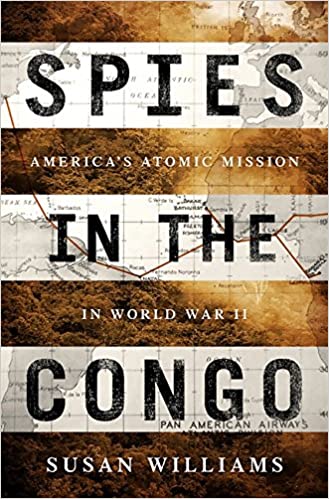|
The Templars: The Rise and Spectacular Fall of God's Holy Warriors
By Dan Jones Published in September 2017 448 Pages Thibault’s Score: 4/5 One topic that comes up repeatedly when studying the crusades is that of the knightly orders. This book is a concise history of the Knights Templar and, to a lesser extent, the other knightly orders that came to dominate the holy land. The Knights Templar were founded by Hugues de Payens in the years following the first crusade. Originally the knights consisted of a band of 9 men who pledged to protect pilgrims and travellers visiting the holy land. After roughly a decade of existence, the templars receive an official endorsement from the Vatican, solidifying their institution. Over time, the templars become an increasingly important part of the defense of the holy land from the Muslim forces. They establish a solid reputation as honest and trustworthy brokers and fearsome holy warriors. Most interestingly, they also slowly evolve into investment bankers. Their reputation for trustworthiness leads to their accumulation of wealth as various lords and merchants begin using their temples to store wealth. Slowly, they accumulate vast sums of wealth and come to own banks and castles across Europe. This wealth attracts the ire of political enemies and also leads to decadence within their own ranks. Eventually, political disputes with the king of France and popes lead to their persecution. The templars are hunted down across Europe, and their order comes to an end in the early 1300s. The incredible amounts of power and influence of the templars will lead to centuries of speculation about their continued survival and role as a behind the scenes power in Europe. Many movies and books speculating about them have been written with plots ranging from their evolution into freemasons or their contact with aliens. Dan Jones attempts to refute these conspiracy theories in his book, although after reading it, I am even more convinced that there might be a kernel of truth to these allegations. Many knights templar in places like Spain never disappeared - they simply rebranded their orders adopting new names of uniforms. Furthermore, there are rumors that they were able to hide their incredible wealth prior to their persecution. I recommend this book to anyone interested in crusades history. I would classify the difficulty of this book as intermediate - as long as the reader has a basic understanding of the chronology and major events of the crusades, this book will be easy to understand. It is an enjoyable read for both amateur crusades historians like myself as well as novices. I recommend it highly to anyone interested in learning about Europe’s first investment bankers as well as those who want to learn the truth about the Templars.
1 Comment
The Field of Blood: The Battle for Aleppo and the Remaking of the Medieval Middle East
By Nicholas Morton Published in February 2018 222 Pages Thibault’s Score: 4/5 The Field of Blood describes the events before, during, and after the battle of Ager Sanguinis in 1119. The failed crusader invasion of Aleppo and the ensuing battle of Ager Sanguinis would mark a turning point in the history of the crusades. Prior to 1119, the crusaders seemed like an indestructible and unstoppable force. The crusader defeat in 1119 saw a turning point. In material terms, the crusader states lose significant amounts of money, manpower, and resources during the battle. Even more importantly, the illusion of crusader invincibility was shattered. The Christian forces lost confidence, while the Muslim forces gained confidence. Aleppo also plays a pivotal role in the civil war which started in 2011 and is still raging today in Syria. This goes to show that, despite radical changes in society and technology, geography continues to shape geopolitics and causes history to echo. I enjoyed reading “The Field of Blood” and thought it was an excellent book. However, I do not recommend this book to a general audience. Many of the topics covered are quite advanced, and require a deep pre-existing knowledge of the events that precede and proceed the battle of Ager Sanguinis. I highly recommend this very competently written and sourced narrative history to my fellow amateur historians who want to go very deep into the specific details of the crusades. Spies in the Congo: America's Atomic Mission in World War II
By Susan Williams Published in August 2016 432 Pages Thibault’s Score: 4/5 Spies in the Congo is a history of how the US acquired the uranium that it used for its nuclear weapons during WW2. During World War 2, the largest uranium mine in the world was located in the far eastern Katanga province of the country today known as the Democratic Republic of Congo. At the time, the DRC was a colony of Belgium. This would cause a world of trouble during WW2. At the start of the war, Belgium was a neutral country. Its population was divided between Flemish, French, and German speakers. As a result, when Belgium was invaded by Germany, part of the population sided with the Germans, and part with the allies. As a result, the white population of the Belgian congo was divided in terms of their support for the axis and allies. The world’s largest uranium mine, the Shinkolobwe mine, was operated by the Union Minière du Haut Katanga (Mining Union of Upper-Katanga). Spies from all major powers attempting to build nuclear bombs, both axis and allied, flocked to the Belgian Congo to attempt to gain control of the uranium mines in the country. Spies in the Congo is a fantastic book that recounts the stories of the lives and the men and women who secured the United States uranium supply during the second world war. The spies faced numerous challenges such as assasination attempts, riots, and diplomatic intrigue. I recommend this book to anyone interested in learning more about intelligence operations, WW2, nuclear warfare, and the DRC. |
Thibault SerletMost of my articles are book reviews, but I also write about many other topics. Archives
December 2023
Categories |



 RSS Feed
RSS Feed